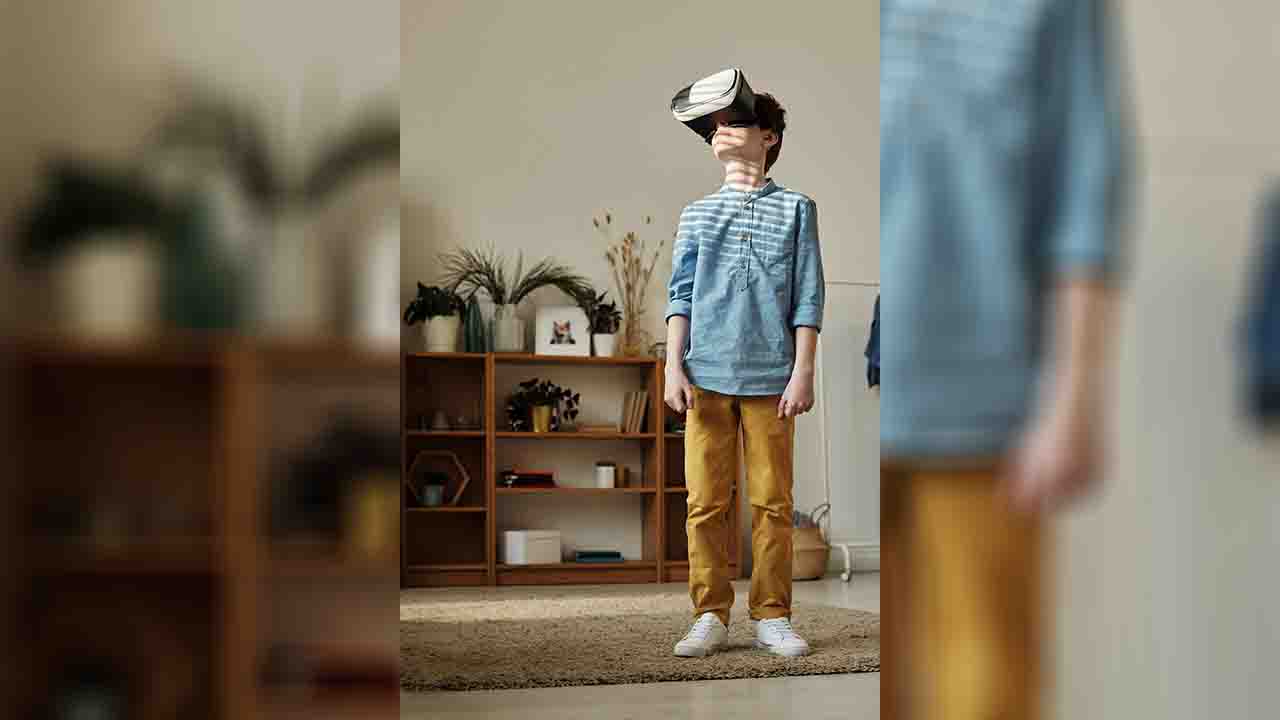Science & Technology, Australia (Commonwealth Union) – Virtual reality (VR) is a technology that allows users to immerse themselves in a computer-generated simulated environment that can be similar to or entirely different from the real world. VR provides a sensory experience that engages multiple senses, primarily sight and sound, to create a feeling of presence in a digital or virtual world. VR generally creates a sense of presence, where users feel as though they are physically present in the virtual environment. This immersion is achieved through the use of specialized hardware, including VR headsets and controllers, which track the user’s movements and adjust the virtual world accordingly.
Researchers are harnessing the power of VR to motivate individuals with intellectual disabilities in South Australia to engage in regular physical exercise. This innovative gaming program not only cultivates positive exercise habits but also mitigates their heightened susceptibility to early-onset cardiovascular diseases, strokes, and heart attacks.
Dr. June Alexander and Dr. Joyce Ramos from Flinders University have collaborated with 16 participants at the Bedford Group to implement an 8-week VR-based exercise regimen. The primary goal is to inspire individuals with intellectual disabilities to embrace intensive exercise routines and foster a long-term commitment to physical fitness.
Under the program, volunteers are required to partake in supervised sessions lasting one hour, three times a week, utilizing readily available VR equipment at the Bedford Group. Each session integrates 50 minutes of exercise through popular gaming applications such as Dance Central, Beat Sabre, the Thrill of the Fight, Space Pirate Trainer, and an array of other engaging games.
Throughout the trial, Flinders University researchers closely monitor participants’ heart rates, perceived exertion levels, and exercise intensity. These metrics are meticulously recorded to track their progress and physical advancements.
Remarkably, the affordability of commercial VR systems in recent years has made it possible to offer individuals with disabilities access to a diverse range of safe activities from which they were traditionally excluded.
Dr. June Alexander, a Lecturer in Disability and Inclusion within the College of Nursing and Health Sciences, emphasizes that most Australians with developmental disabilities fail to meet the globally recommended minimum levels of physical activity essential for good health. This deficiency significantly elevates their vulnerability to cardiovascular diseases.
“The tendency for people with an intellectual disability to avoid regular exercise has been attributed to low motivation and reduced access to mainstream health and fitness services such as gyms, so the aim of this innovative VR program is to help participants overcome these barriers.
“Our exercise program will compare the overall impact of a regular and tailored VR activity
Dr. Joyce Ramos, an Accredited Exercise Physiologist and Senior Lecturer at Flinders University, affirms that the current project serves as a pioneering pilot for an innovative VR program with the potential to be expanded nationwide. The objective is to assist individuals with intellectual disabilities across Australia in meeting their weekly exercise requirements.
Dr. Ramos indicated that their VR health study is in the process of crafting evidence-based systems capable of enhancing physical activity levels and overall quality of life for individuals with intellectual disabilities. This initiative is particularly crucial for those residing in regional and rural areas of Australia, where access to similar on-site services may be limited.
Rachael Griffiths, Chief Operating Officer at Bedford, expresses pride in their investment in this vital research aimed at enhancing the health and well-being of individuals with disabilities. She notes that researching the impact of this technology on the fitness levels of people with disabilities represents a groundbreaking endeavor on a global scale. Moreover, it offers a fun and engaging approach to maintaining an active lifestyle, increasing the likelihood of adhering to a consistent exercise regimen.








